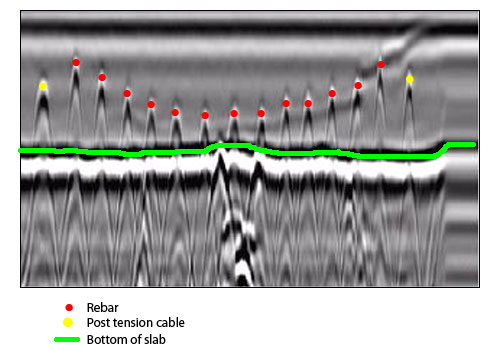Enhancing Project Planning and Implementation Through Advanced Concrete Scanning Methods
In the realm of task planning and foresight, precision and implementation are important components that can make the distinction in between success and problems. Advanced concrete scanning strategies have become a sophisticated device readied to elevate the requirements of task monitoring within the building sector. By harnessing innovative modern technology, these techniques use a look into the structural honesty of a building even before the very first block is laid. The effects of such developments are profound, promising a paradigm shift in exactly how projects are approached and provided.
Advantages of Advanced Concrete Scanning Techniques

Improved Accuracy in Task Analyses
Enhancing job assessments through advanced concrete scanning strategies considerably improves the precision and reliability of construction examinations. By utilizing cutting-edge scanning modern technologies such as ground-penetrating radar (GPR) and 3D imaging, job teams can now obtain detailed understandings into the problem of concrete frameworks, determining prospective problems or weaknesses that might not be visible to the nude eye. This improved level of precision in job assessments makes it possible for building professionals to make more educated decisions pertaining to repair work and maintenance strategies, bring about improved total project outcomes.
Additionally, the boosted precision in task assessments accomplished via advanced concrete scanning methods assists in reducing the threat of unforeseen problems throughout the construction stage. By proactively detecting concealed abnormalities within concrete structures, such as rebar deterioration or voids, task teams can deal with these problems at an early stage, staying clear of pricey delays and revamp later in the project lifecycle. Eventually, the enhanced precision in task assessments facilitated by innovative concrete scanning techniques contributes to higher performance, cost-effectiveness, and high quality in building jobs.
Very Early Recognition of Architectural Obstacles
Very early discovery of structural obstacles plays a crucial function in making sure the stability and security of concrete frameworks throughout the construction procedure. Identifying potential issues at a beginning enables prompt treatment, protecting against pricey rework, timetable hold-ups, and safety risks. Advanced concrete scanning techniques, such as ground-penetrating radar (GPR) and 3D imaging, enable project groups to discover covert flaws, spaces, reinforcement format discrepancies, and various other abnormalities that can compromise the framework's stability.
By carrying out these methods during the planning and implementation stages, construction specialists can proactively attend to structural obstacles prior to they rise into significant issues. As an example, detecting poor concrete cover over support bars early can stop corrosion and architectural weakening in the long run - RainierGPR Service Areas. In addition, determining variations in concrete density or density can help maximize material use and guarantee consistent strength homes throughout the structure
Inevitably, early recognition of structural difficulties via sophisticated concrete scanning not just enhances the total quality and durability of the building and construction but also adds to a safer developed atmosphere for owners and users.
Enhanced Precaution in Construction
The application of durable safety methods is imperative in the building sector to minimize risks and secure the well-being of stakeholders and workers. To improve safety procedures, construction business are significantly taking on technological advancements such as wearable gadgets that keep track of employees' essential signs click here to find out more and find potential health read problems in real-time. By prioritizing safety via the consolidation of innovative innovations and extensive training programs, building and construction tasks can significantly decrease mishaps and produce a safe functioning setting for all entailed.
Streamlining Job Monitoring Processes
To optimize operational efficiency and ensure project success in the construction sector, a concentrate on improving project management procedures is essential. By implementing reliable job management processes, building and construction tasks can lessen hold-ups, reduce prices, and enhance total productivity. One key element of enhancing project monitoring is using sophisticated technologies such as Structure Info Modeling (BIM) software program, which allows real-time partnership, clash discovery, and precise project organizing. In addition, the adoption of cloud-based project administration systems enables seamless interaction among employee, immediate accessibility to project information, and the capability to track progress in real-time.

Final Thought
In verdict, the use of innovative concrete scanning methods uses various advantages for task planning and execution. These techniques provide better precision in task assessments, very early identification of structural challenges, boosted safety and security actions in building and construction, and streamlined task administration processes. Including these approaches into why not look here project workflows can inevitably bring about a lot more reliable and effective results in building projects.
Ultimately, the boosted precision in job assessments promoted by sophisticated concrete scanning techniques contributes to better performance, cost-effectiveness, and high quality in construction jobs. RainierGPR Service Areas.
To optimize operational performance and make sure project success in the building and construction sector, an emphasis on improving task management processes is important. By executing reliable project administration procedures, construction jobs can lessen hold-ups, minimize prices, and boost general performance. By streamlining job monitoring processes with modern technology integration, clear communication, and data-driven methods, building and construction projects can accomplish better efficiency, cost-effectiveness, and successful results.
These methods supply improved accuracy in job analyses, very early recognition of architectural obstacles, enhanced safety procedures in building and construction, and structured task monitoring procedures.
 Mara Wilson Then & Now!
Mara Wilson Then & Now! Mr. T Then & Now!
Mr. T Then & Now! Marla Sokoloff Then & Now!
Marla Sokoloff Then & Now! Michael Jordan Then & Now!
Michael Jordan Then & Now! Mary Beth McDonough Then & Now!
Mary Beth McDonough Then & Now!